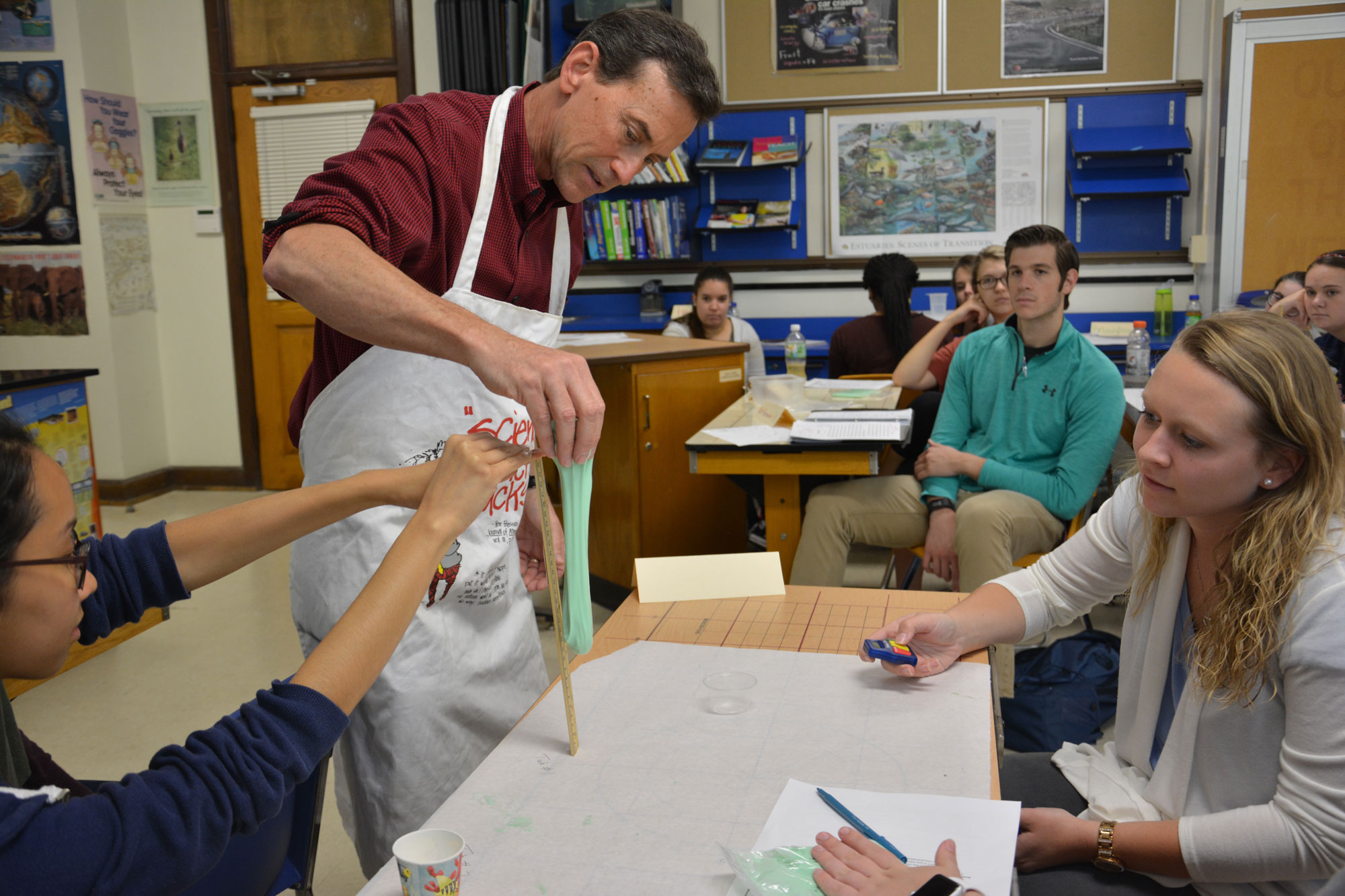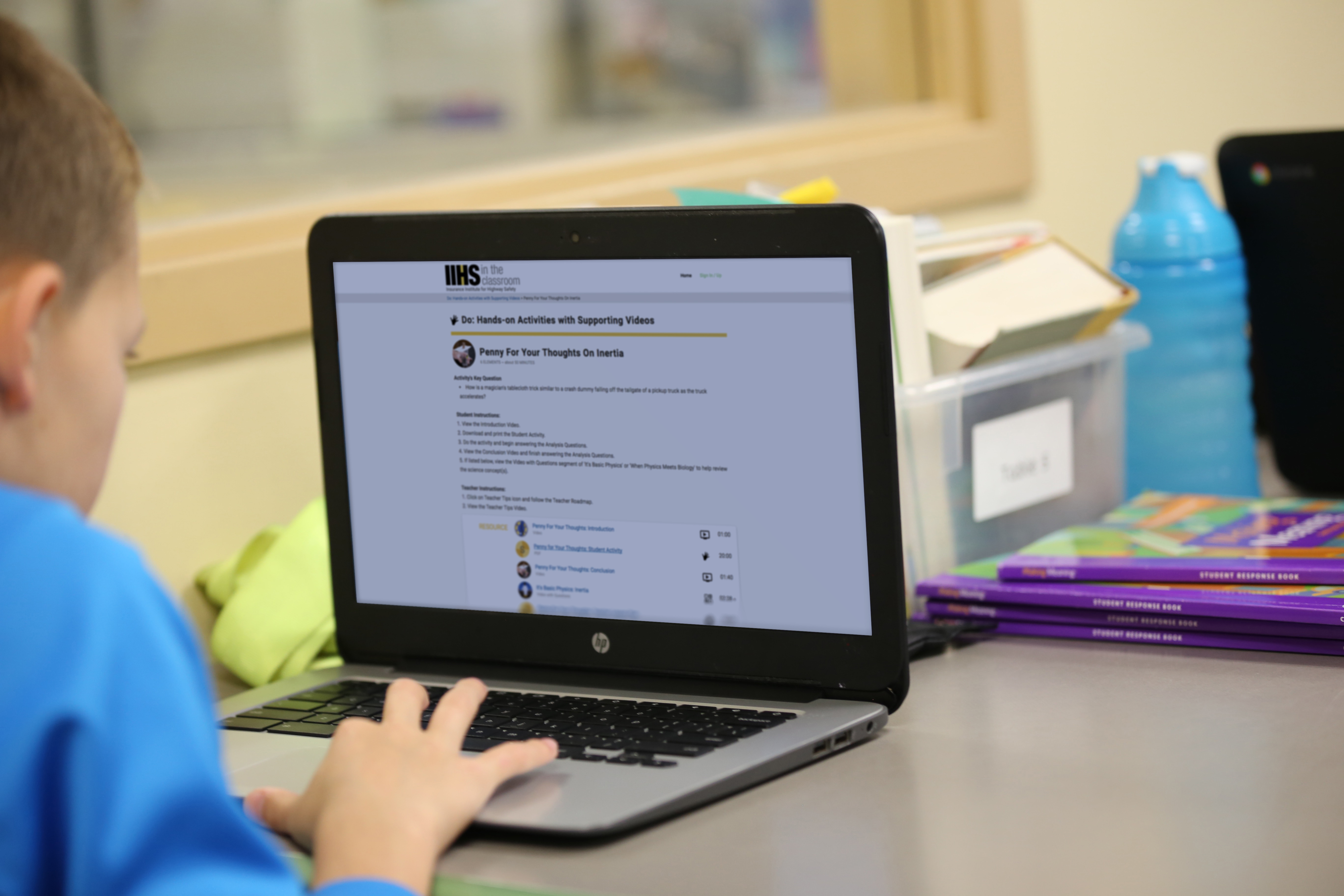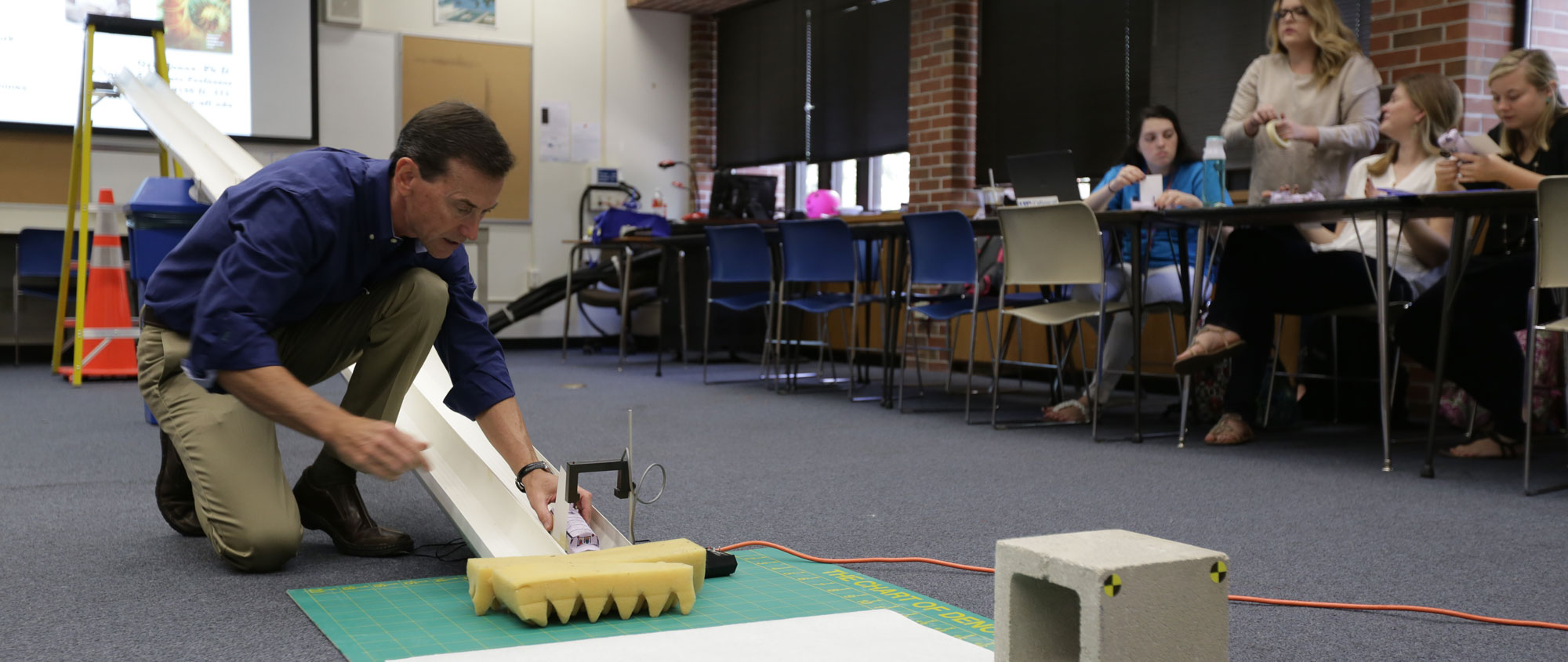
In collaboration with the University of Florida College of Education, the Insurance Institute for Highway Safety (IIHS) has created a free, online science education platform that excites students and educates teachers on the power of science using real-life applications – like car crashes. Combining the latest research in web-based learning and educational technologies, science teachers and grades 5-12 students across the nation are experiencing science in action.
“There’s nothing more heart wrenching than to pick up the paper on a Sunday morning and you read about a fatal car crash that’s involved one of your personal students or the students at your school,” said Griff Jones, Ph.D, emeritus faculty at the University of Florida College of Education and former K-12 educator. With a 20-year career as a K-12 science teacher, Jones knows all too well the tragedy of losing students to car accidents.
Speeding, texting, distracted driving and missing seatbelts play significant roles in the leading cause of death among 13 to 19-year-olds: car crashes. Among teens, nearly seven die every day in car accidents. This is a tragedy ever present in daily life, but a tragedy that can be preventable. Jones knew something must be done to better reach young drivers everywhere.

As fate would have it, the Insurance Institute for Highway Safety (IIHS) was also searching for a better way to engage teen drivers and influence their driving decisions. In 1999, the institute reached out to Jones to create a science education film that could be implemented in high school science classrooms across the nation. Their shared hope was to connect with students through education, focusing on the excitement of science rather than the fear of accidents.
In 2000, IIHS and Jones partnered to release “Understanding Car Crashes: It’s Basic Physics,” an instructional video designed and hosted by Jones. The film explores the role scientific concepts, such as Newton’s law of motion, play in the real world of cars and car crashes. It aimed to increase young driver understanding of key science topics to provide the background needed to make responsible driving decisions on the road. “The basic premise is you can’t argue with the laws of physics,” Jones said.

The educational video gained momentum reaching K-12 science classrooms across the nation and led to the production of a sequel in 2008, “Understanding Car Crashes: When Physics Meets Biology,” which explores the effects of a car accident on the human body. But the IIHS and Jones did not end their journey to safer roads there.
In 2017, the IIHS and Jones began collaborating with the University of Florida College of Education Department of E-Learning, Technology and Communications (ETC) on a project that would innovate science education and enthrall the new generation of learners. Merging lanes of expertise in pedagogy, web-based learning and crash science, IIHS in the Classroom was launched in June 2018.
IIHS in the Classroom is a free, online science education resource that acts as an interactive toolbox expanding upon the scientific concepts presented in the original “Understanding Car Crashes” hit films. The platform is designed to effectively excite, inform and inspire grades 5-12 students and their science teachers. Inertia, momentum, energy and impulse are ingeniously explored through avenues such as paper car crashes, cracked eggs and stretched Silly Putty providing students firsthand opportunities to witness science in action. “Our greatest challenge is to make science real to everyone out there,” Jones said.
The site seeks to ingrain in students the importance of making smart driving decisions well before they actually take the road. It features the original science education films repackaged to include three viewing options, 14 hands-on activities and a collection of additional interactive resources ranging from crash-science demonstrations to teen driving safety tips. The curriculum was designed by Jones to support the diverse learning styles of today’s students and provide the connecting link between the real world and science, technology, engineering and mathematics. All activities align with the Next Generation Science Standards (NGSS), which are a research-based framework for high-quality K-12 science education practices. NGSS have been implemented in classrooms across the nation and are guided by three proven dimensions of science learning: crosscutting concepts, disciplinary core ideas and science and engineering practices.

IIHS in the Classroom offers science teachers expanded access to resources created specifically to foster their learning. Included are comprehensive lessons plans and instructional guides providing the background needed to successfully learn and teach each topic. As grades 5-12 science educators teach a wide range of subjects with differing levels of ability, the platform offers the tools needed to effectively integrate the curriculum into their dynamic classroom structures.
ETC led the instructional design, front-end website design, back-end website development, videography and photography to launch IIHS in the Classroom as its own learning management system. “It’s heavily informed by what we know works with students and teachers,” said Jason Arnold, director of ETC. The site’s architecture was built using the latest research in learning theory as it applies to online spaces with much of it coming directly in house from the work of College of Education faculty and doctoral students. “It’s amazing to watch what they are producing,” Arnold said.
But the creation of IIHS in the Classroom has advanced more than driver safety education practices. Its production has delivered enhancements in the quality of learning in and beyond the classroom. Youth across the nation have a free, online platform filled with interactive science activities that may inspire a love for science they never realized. Science educators have access to innovative research-based lessons designed to cultivate their learning and provide a foundation they can easily expand upon when teaching in their own classrooms.
Even in higher education, IIHS in the Classroom has made a direct impact. More than 100 online courses in the College of Education have been updated to include tools and practices found successful in the design and testing of the site. Courses are now produced with high quality analytics software to track engagement. Lectures include embedded formative assessment to informally measure comprehension and effectiveness of delivery. Videos are recorded and edited using quick b-roll cuts found to captivate viewers longer. Tom Dana, College of Education associate dean for academic affairs, said “The ETC team is equipped to build and deliver highly impactful instructional tools and technologies that change the landscape of what it means to be an online learner.” Although the purpose of IIHS in the Classroom was to encourage safer driving through education, its reach has traveled further.
 Education Technology
Education Technology

